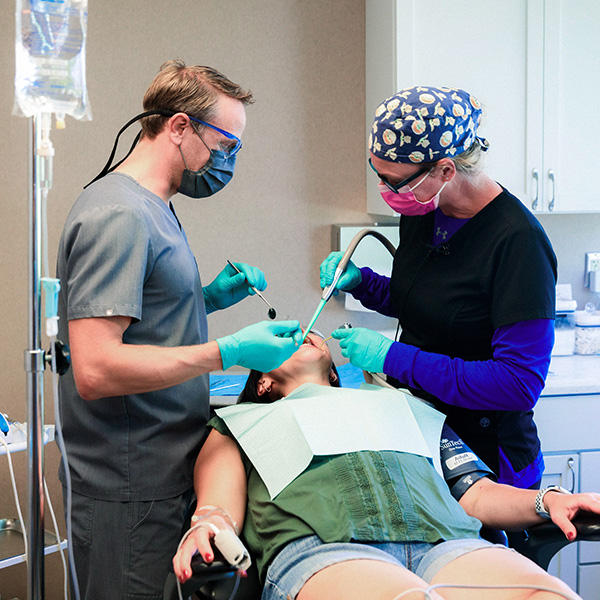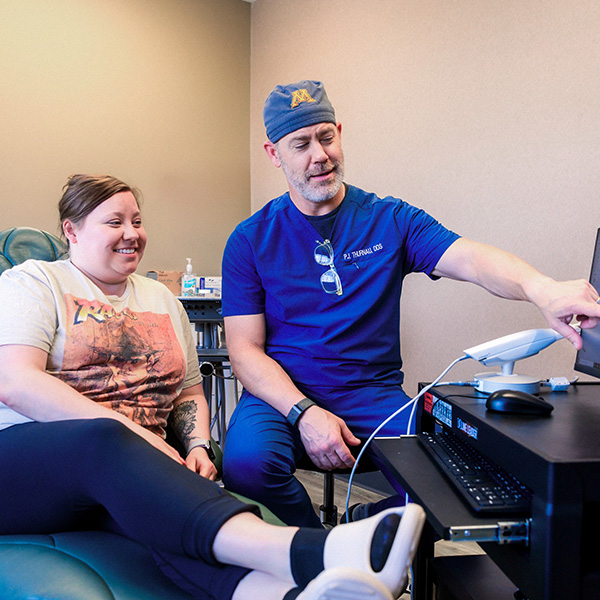Bloomington, MN
IV Sedation
IV Sedation Dentistry in Bloomington, MN
Comfortable, Anxiety-Free Dental Care for a Stress-Free Experience
At Minnesota Dental Surgery and Implant Center, we understand that dental anxiety can prevent patients from seeking necessary treatment. That’s why we offer IV sedation dentistry, a safe and effective solution to help you feel completely relaxed and comfortable during your procedure. Whether you need dental implants, extractions, or other surgical treatments, IV sedation ensures a stress-free and pain-free experience.
Contact Us
What Is IV Sedation?
IV sedation (intravenous sedation) is a conscious sedation technique that allows patients to remain in a deep state of relaxation while still being responsive. The sedative is administered through an IV line, allowing for immediate effects and precise dosage control. Most patients experience little to no memory of the procedure.

Benefits of IV Sedation Dentistry
- Eliminates Anxiety & Fear – Ideal for patients with dental phobia.
- Pain-Free Experience – You remain deeply relaxed and comfortable.
- Faster & More Efficient Treatment – Allows dentists to complete more work in one visit.
- Safe & Controlled Sedation – Adjusted for your comfort and needs.
- Little to No Memory of the Procedure – Reduces stress for future dental visits.

Who Can Benefit From IV Sedation?
IV sedation is perfect for patients who:
- Experience moderate to severe dental anxiety.
- Need extensive dental work in a single visit.
- Have a strong gag reflex or difficulty sitting still for long periods.
- Are undergoing oral surgery or dental implant procedures.
During your free consultation, our experienced team will evaluate your medical history and discuss whether IV sedation is the right choice for you.

Call Our Office for a Free Consultation!
At Minnesota Dental Surgery and Implant Center, our priority is ensuring a comfortable, stress-free dental experience. Let IV sedation help you get the care you need without fear or anxiety.
Call us today to schedule your FREE consultation and take the first step toward relaxed, worry-free dental care!
Frequently Asked Questions
Don’t let fear hold you back! Call to schedule your FREE consultation and experience stress-free dentistry today!
